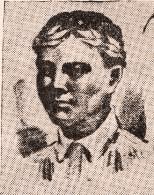Pedro Bucaneg
| Pedro Bucaneg | |
|---|---|
 | |
| Born | March 1592 |
| Died | c. 1630 |
| Occupation | Poet |
Pedro Bucaneg (March 1592 – c. 1630) was a Filipino poet. Blind since birth, he is the acknowledged author of the Ilocano epic Biag ni Lam-ang (Life of Lam-ang). He is considered the "Father of Ilocano literature." A street inside the Cultural Center of the Philippines (CCP) complex in Pasay City, Philippines is named in his honor. His surname is lent to the Bucanegan, the Ilocano equivalent of the Balagtasan.
Biography
Bukaneg was a foundling, who shortly after his birth already floating in a basket between Bantay and Vigan in the Banaoang River was found by an old woman. They brought him to the Bantay Augustiner priest who baptized him as Pedro Bucaneg. Bukaneg was blind, but appeared during his upbringing in the Augustinian convent smart and talented. He took lessons in Latin and Spanish and also learned the local languages and Ilocano Isneg.
Through his knowledge of these languages he was asked by the priests in the region to translate their prayers and sermons in local languages. He was being asked to help with the conversion of the local population. Bukaneg composed poems and songs and was loved by the Ilocanos as a troubadour. He was regarded by the locals as a seer. Even the Spaniards knocked him for his services. He would have identified the killer of a servant of a Spaniard on a day in a row of Itneg men by placing his hand on the chest of all these men.
His blindness prevented him not to write. He dictated the text of his poems, songs and translations, and someone else wrote. However, much of the work of Bukaneg has been preserved. Ilocano epic Biag ni Lam-ang is attributed to Bukaneg by some authors and historians. However, it is also possible that Bukaneg wrote the text of the work that has been sung for centuries by the Ilocano and thus preserved it for eternity. It was also Bukaneg who translated the Doctrina Cristiana in Ilocano. This book was printed in 1593 as one of the first books in the Philippines and was intended for use in the conversion of the local population. In 1621 the Ilocano translation of Bukaneg was printed in the Augustinian Convent of Manila. Bukaneg was also largely responsible for Arte de la Lengue Iloca, the first grammar book of the Ilocano of Brother Francisco Lopez, which was printed in 1927 by the University of Santo Tomas.
Bukaneg died around 1630. In his honor, a street in the complex of the Cultural Center of the Philippines (CCP) is named after him in Pasay.